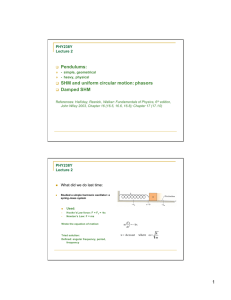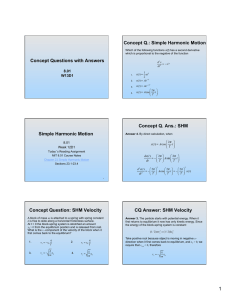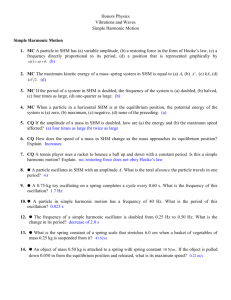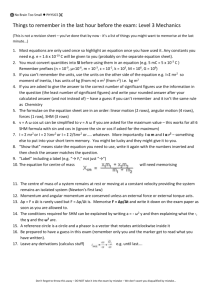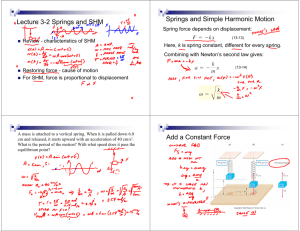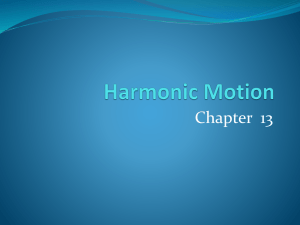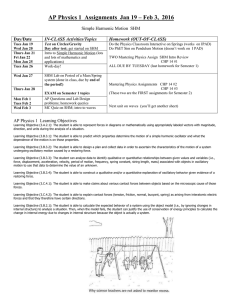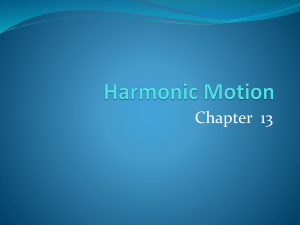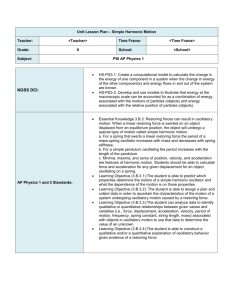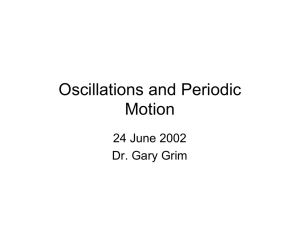chapter11
advertisement
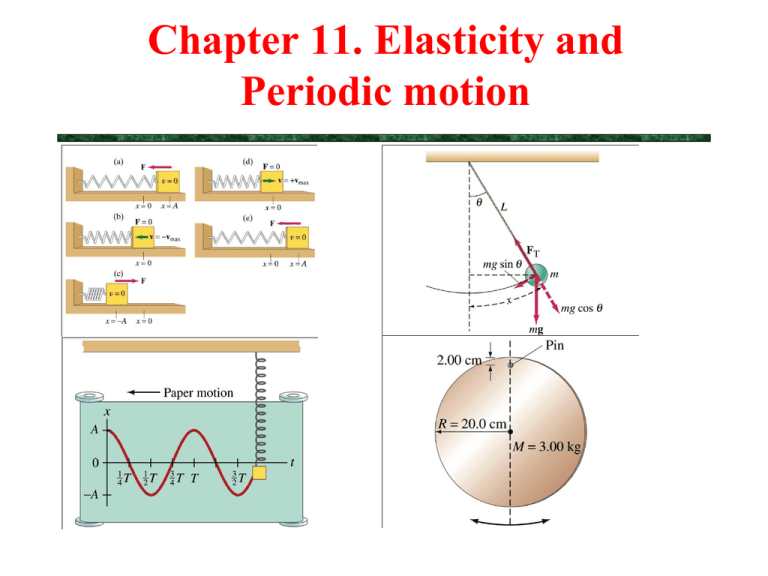
Chapter 11. Elasticity and Periodic motion Stress and strain Hook’s law: stress/strain=constant Bulk modulus p B V /V0 (Shear modulus for steel 0.84 ·10^11Pa) N Stress F ( N / m 2 ) or (Pa) A l Strain (No dimension) l0 Simple harmonic motion SMH Simple harmonic motion is the projection of uniform circular motion on a diameter. Consider a ball on a circular track on the table and looking at it from the side Circle of Reference x = A Cos(t + ) v = - A Sin(t + ) = 2 T = 2 f -a=- 2 A Cos(t + ) A force varying with distance is the basis of SHM Energy in SHM Energy in SHM • Energy is conserved during SHM and the forms (potential and kinetic) interconvert as the position of the object in motion changes. 1 1 1 1 E mv2x kx 2 kA2 mv2max 2 2 2 2 Energy conservation in SHM F = -mg Sin -mg x = L F = -kx k= F- mg x L mg L = max Cos(t + ) k = g = m L Note: mass doesn’t enter amplitude doesn’t enter X versus t for SHO then simple variations on a theme x(t) Acos( t ) VERY IMPORTANT: frequency and period of oscillations DO NOT depend on the amplitude!! What is the period of a pendulum on mars (g(mass)=3.71 m/s^2), if the period of this pendulum on earth is 1.6 sec. SUMMARY Periodic motion: motion that repeats itself in a defined cycle. Simple harmonic motion: if the restoring force is proportional to the distance from equilibrium, the motion will be of the SHM type. The angular frequency and period do not depend on the amplitude of oscillation. Energy in SHM: Simple pendulum: g 1 f L 2 1 T T 1 f 2f 2 T Fx k x m m k 1 k f m 2 2 m x Acos(t ) Fx kx 1 1 1 1 E mv2x kx 2 kA2 mv2max 2 2 2 2 f g L T 2 L g ax T 2 m k

